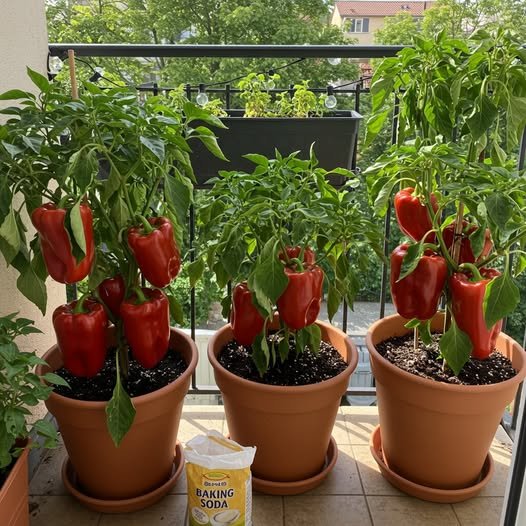Tomato cages are a versatile and practical tool for gardeners looking to maximize their growing space and support a variety of plants. Originally designed to support the sprawling growth of tomato plants, these cages can be used to enhance the growth of many other plants by providing vertical support, improving air circulation, and reducing the risk of disease. By using tomato cages, gardeners can keep plants off the ground, which helps prevent rot and pest infestations. This article explores 12 top plants that benefit from the use of tomato cages, highlighting the advantages of vertical gardening and how it can lead to healthier, more productive plants.
1. Tomatoes: The Classic Choice
Tomatoes are the quintessential plant for tomato cages, as they naturally grow tall and benefit from the support. The cages help keep the plant upright, preventing branches from breaking under the weight of the fruit. This support also improves air circulation around the plant, reducing the risk of fungal diseases. Additionally, keeping tomatoes off the ground helps prevent soil-borne diseases and makes harvesting easier.
2. Cucumbers: Vertical Growth Benefits
Cucumbers thrive when grown vertically, as it allows for better air circulation and sunlight exposure. Using a tomato cage helps cucumbers climb, which keeps the fruit clean and reduces the risk of rot. Vertical growth also makes it easier to spot and harvest ripe cucumbers, and it saves space in the garden, allowing for more plants in a smaller area.
3. Peppers: Supporting Heavy Fruit
Peppers, especially larger varieties, can benefit from the support of a tomato cage. As pepper plants grow and produce heavy fruit, they can become top-heavy and prone to tipping over. A cage provides the necessary support to keep the plant upright, ensuring that the fruit stays off the ground and reducing the risk of damage or disease.
4. Eggplants: Preventing Ground Rot
Eggplants can become quite heavy as they mature, and their branches are prone to breaking without support. Using a tomato cage helps keep the fruit off the ground, preventing rot and pest infestations. The cage also supports the plant structure, allowing for better air circulation and sunlight exposure, which promotes healthier growth.
5. Peas: Climbing and Space Efficiency
Peas are natural climbers and benefit greatly from the vertical support of a tomato cage. By growing peas vertically, gardeners can save space and increase yield. The cage provides a structure for the peas to climb, which keeps the pods clean and makes harvesting easier. Vertical growth also improves air circulation, reducing the risk of disease.
6. Beans: Maximizing Vertical Space
Like peas, beans are climbers that thrive with vertical support. A tomato cage provides a sturdy framework for beans to climb, which helps maximize garden space and increase yield. Vertical growth keeps the beans off the ground, reducing the risk of rot and making harvesting more convenient.
7. Squash: Controlling Sprawl
Squash plants can take up a lot of space in the garden, but using a tomato cage can help control their sprawling growth. By training squash to grow vertically, gardeners can save space and improve air circulation around the plant. This method also keeps the fruit off the ground, reducing the risk of rot and pest infestations.
8. Zucchini: Encouraging Upright Growth
Zucchini plants can become quite large and unwieldy, but a tomato cage can help manage their growth. By encouraging zucchini to grow upright, gardeners can save space and improve air circulation. This method also keeps the fruit off the ground, reducing the risk of rot and making it easier to spot and harvest ripe zucchini.
9. Melons: Supporting Heavy Vines
Melons can produce heavy fruit that requires support to prevent vines from breaking. A tomato cage provides the necessary structure to support melon vines, keeping the fruit off the ground and reducing the risk of rot. This support also helps improve air circulation and sunlight exposure, promoting healthier growth and sweeter fruit.
10. Nasturtiums: Adding Beauty and Pest Control
Nasturtiums are beautiful flowering plants that can benefit from the support of a tomato cage. By growing nasturtiums vertically, gardeners can add a splash of color to their garden while saving space. Additionally, nasturtiums are known for their pest-repelling properties, making them a functional and decorative addition to any garden.
11. Morning Glories: Decorative and Functional
Morning glories are climbing plants that can add a decorative element to any garden. Using a tomato cage provides the support they need to grow vertically, showcasing their beautiful flowers. This vertical growth also helps save space and can be used to create a living screen or privacy barrier in the garden.
12. Clematis: Enhancing Vertical Gardens
Clematis is a popular climbing plant known for its stunning flowers. A tomato cage provides the perfect support for clematis to grow vertically, allowing the plant to display its blooms to their full potential. This method also helps improve air circulation and sunlight exposure, promoting healthier growth and more prolific flowering.
Conclusion: The Advantages of Using Tomato Cages
Using tomato cages in the garden offers numerous advantages, from supporting heavy fruit to improving air circulation and saving space. By growing plants vertically, gardeners can increase their yield, reduce the risk of disease, and make harvesting easier. Tomato cages are a versatile tool that can be used for a wide variety of plants, making them an essential addition to any garden. Whether you’re growing vegetables, fruits, or flowers, tomato cages can help you achieve a more productive and beautiful garden.



